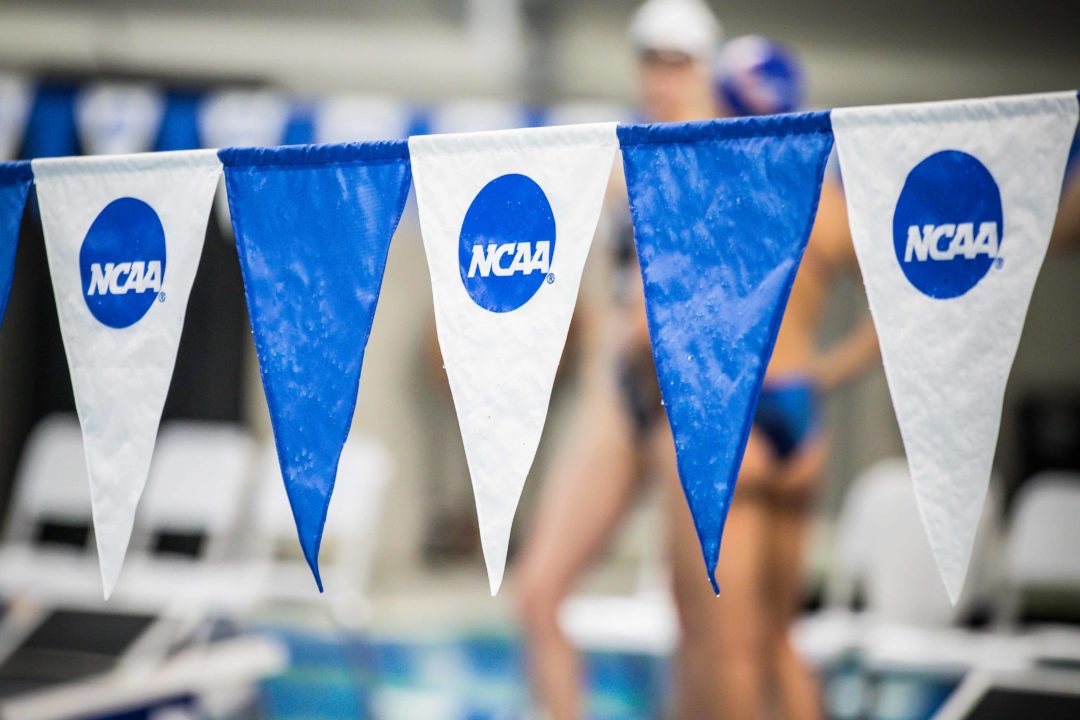The NCAA released their financial statement for the fiscal year 2019-2020 this week. The statement shows how the association adapted and responded to the coronavirus pandemic while taking measures to anticipate such scenarios.
Despite revenues dropping over $600 million, the NCAA showed a loss of only $56 million. This is largely due to event cancellation insurance, which covered last year’s Division 1 Men’s Basketball tournament. Despite losing over $800 to the cancellation of the tournament, insurance was able to cover $270 million of that amount. The NCAA also took steps to reduce staff expenses such as furloughs and salary reductions.
At the Division 1 level, payouts to schools dropped 60% from $611 million in 2018-2019 to $246 million last year. Schools depend on these payouts to help fund Olympic sports such as swimming and diving.
Last year saw a trend of schools eliminating sports including swimming and diving in wake of the pandemic. Schools anticipated a reduction in the payment amount and made the move to eliminate programs to reduce spending. Eighteen swimming and diving programs have been cut since last spring though there has been a trend of schools such as William & Mary, East Carolina (women only), and most recently Dartmouth reinstating programs.
The NCAA again has insurance in place for this year’s basketball tournament, yet with the coronavirus still affecting collegiate sports, there is uncertainty as to whether winter and spring championships will take place. With schools depending significantly on payouts from the NCAA to help fund Olympic programs, it is in the best interest of member schools that the NCAA men’s basketball tournament takes place. While insurance will cover some of the cost of the tournament if it’s canceled, based on last year’s numbers, it will cover roughly one-third of the anticipated revenue. In that scenario, the NCAA would probably look at further reductions including payouts to member schools.
Of note, the NCAA opened a line-of-credit with PNC Bank in May 2020 with a maximum amount of $125 million. Of that amount, $100 million was used to meet “short-term cash needs,” and the balance was clear by the end of the fiscal year (August 31, 2020).
The statement as a whole sheds some light into the financial health of the NCAA:
- The NCAA had $23.9 million cash-on-hand at the end of FY ‘20 compared to $15.1 million at the end of FY ‘19. In terms of investments, the “fair value” of the investments rose from $473 million to $588 million
- The salary reductions as mentioned above resulted in a savings of $4 million
- As a comparison, the NCAA spent $40.8 million on staff (“Management & General”), $302 million on Division 1, $38.2 million on Division 2, and $22.2 million on Division 3.
- The NCAA hit revenue of over $1 billion in 2019 and fell to $201 million last year. These numbers are based on contracts paid out during that time. Currently-contracted television and radio rights rise over the next 5 years and will hit at least $990 million in 2025.
- Expenses at all three divisions dropped from 2019 to 2020. Division 1 fell from $764 to $302 million; Division 2 fell from $53 to $38 million; Division 3 fell from $35 to $23 million.
- The impact of the coronavirus pandemic on the operating reserve was negligible as it fell from $191 million to $190 million.

So does this mean theyre not a non-profit anymore and can start actually helping student athletes out instead of just lining their pockets off the work and sale the students bring them?
Sorry, $600 million in stocks isn’t enough.
The number of administrative positions at the NCAA office and on each collegiate campus
is out of control. The head person needs 2 or 3 assistants and they in turn need assistants and
the trend continues.
Then of course the BB coach has what 11 athletes but he has 4 assistants ? And so it goes.
Instead use the money to support Olympic sport athletes on the collegiate level.
NCAA sports supply free room and board plus a weekly allowance plus a lavish
cafeteria (food) and tutors to what is termed “the major sports.”